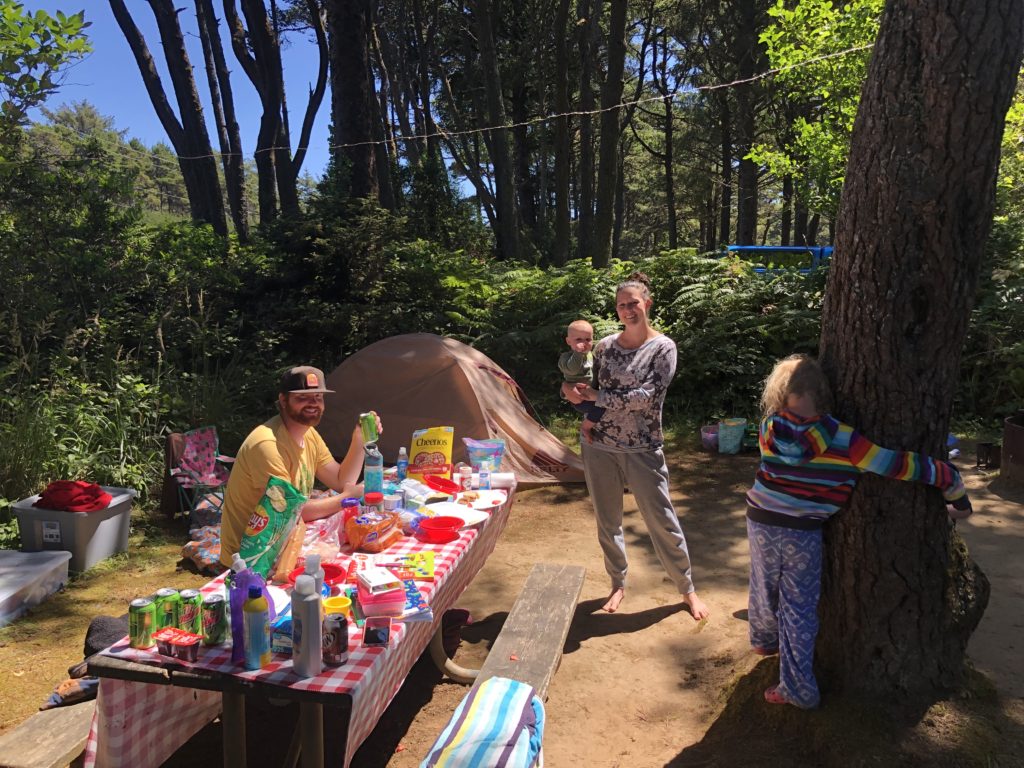
ZACH URNESS/Salem Statesman Journal
In the morning darkness of early spring, Carol Gilbert wakes up with her two young children, makes tea and prepares for battle.
While getting her 7-year-old ready for school and feeding her 2-year-old, Gilbert makes sure her computer is on, her profile logged in and her screen on the right page so the instant the clock strikes 7 a.m. she can click faster than everyone else attempting to score a precious Oregon campsite on a weekend six months in the future.
“I actually set three alarms on my phone so that I don’t forget,” said Gilbert, who lives in Bend. “It’s all about who has the fastest fingers. If you’re even a minute late, you won’t get it.
“It’s crazy, frustrating and it sucks when you don’t get anything, but we love camping. It’s such a great family vacation and a lot cheaper than getting a hotel.”
Her story is far from unique.
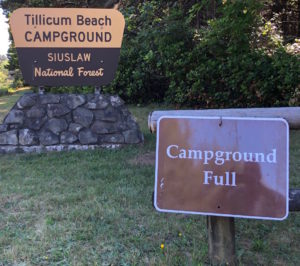
Each morning, numerous Oregonians play “campground Jeopardy” in hopes of scoring reservations on websites such as Recreation.gov and ReserveAmerica.com.
As Oregon’s population grows and the pandemic-fueled rush to the outdoors continues, demand for campsites has skyrocketed at the same time supply has been flat or declined.
Oregon’s state parks have opened just three new campgrounds since 1972, while many campgrounds on federal land have been closed by wildfires.
And opening new campgrounds isn’t easy. Oregon had plans for three large campgrounds shot down since 2008 by local opposition. The U.S. Forest Service has mostly focused on maintaining existing sites.
The shortfall — centered on hotspots like the Oregon coast, central Oregon and around the Willamette Valley — has led to the growth of private campgrounds. The booking website Hipcamp recruits landowners to turn their property into campsites near popular areas. The number of Oregon bookings on Hipcamp have grown 325 percent since 2019, the company said.
“There is just way more demand for campsites than places for people to go,” said Alyssa Ravasio, the founder and CEO of Hipcamp.
Oregon’s state park system set a record for the number of camper nights in 2021, hosting 3.02 million people at 57 campgrounds. The campgrounds were frequently 70 percent to 80 percent of capacity — meaning almost every site was taken on weekends, said officials. And in the summer, many coastal campsites were 90 percent to 95 percent of capacity, meaning only a smattering of single night campsites could be grabbed. The story was similar at the best-known Forest Service campgrounds, particularly on weekends, said Lisa Machnik, recreation officer for Deschutes National Forest.
“We have seen a significant increase to the point that a number of the popular campgrounds are essentially full on peak weekends,” she said. Those typically included campgrounds near rivers, creeks or lakes. That trend rings true throughout northwest and central Oregon. If it’s near the ocean, lake or river, there’s a good chance it’s going to be booked full on summer weekends.
“We do have open campsites, but you have to drive a little farther and maybe go to a campsite without a lake view,” Machnik said.
While state parks have mostly gone to reservations-only systems, Forest Service campgrounds do keep a number of first-come, first-served sites available. But, Gilbert said, that’s a tough sell when you’re traveling with kids.
“If you find yourself spending hours going from campground to campground with two little kids, that might not end very well,” she said. “We try to go midweek when we can, but it’s pretty tough with both of us working full-time.”
There’s also a problem with people booking more campsites than they actually need and then not showing up. Having feweer campsites available has fueled a mad dash to reserve as many campsites as possible, as soon as possible, which exacerbates the problem. And often, people don’t use every night they booked, Outside Magazine reported.
“Everyone’s looking at it from a scarcity mindset,” Eric Karjaluoto, cofounder of Campnab, a site that alerts users about cancellations, told Outside Magazine. “People freak out and grab more than they need. It’s like toilet paper at the beginning of the pandemic. People feel stressed and panicked about booking.”
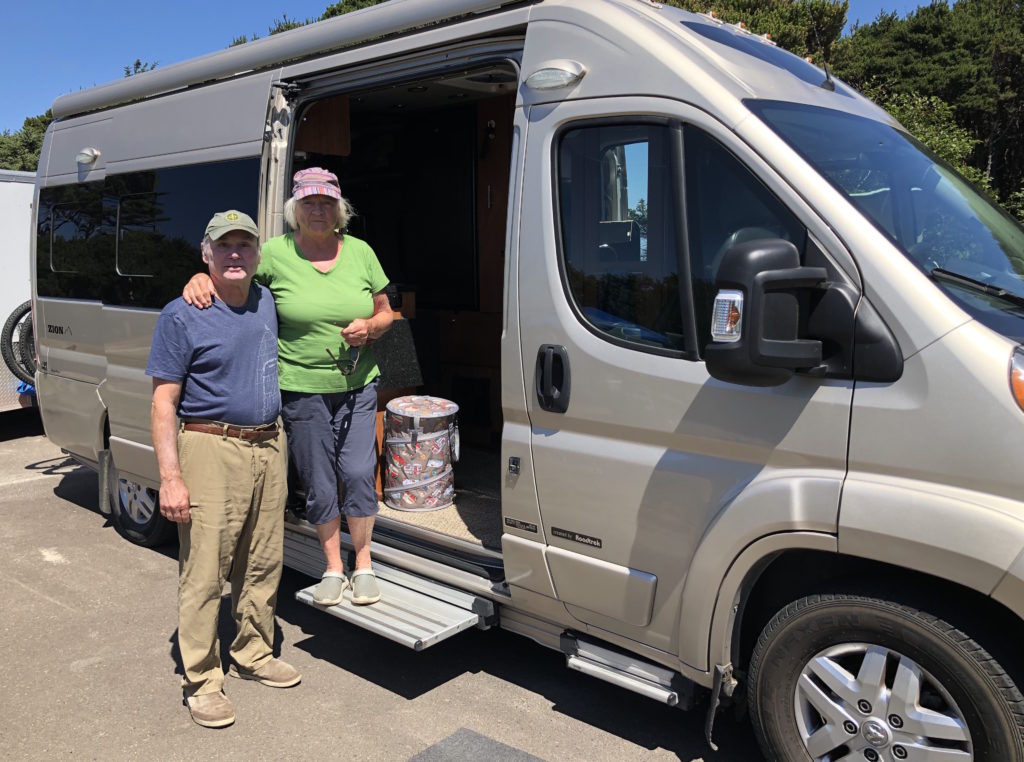
Why not more campgrounds?
Given there is a growing problem with the supply and demand for campsites in Oregon — and that it’s only expected to grow — it begs the question of why more haven’t been built. The vast majority of campgrounds were created during the post-World War II boom up through the 1970s. The only state park campgrounds built in the last two decades include Cottonwood Canyon, Stub Stewart and Bates State Park. One issue is that campgrounds don’t really make money — at least not much — particularly since governments try to keep prices affordable, rather than maximizing profits. Most tent sites range from $12 to $25, depending on the site, while RV sites usually go for $24 to $40.
“State parks don’t run in the black just on visitor revenue — and that’s not really the goal,” said Chris Havel, associate director and a spokesman for the Oregon Parks and Recreation Department.
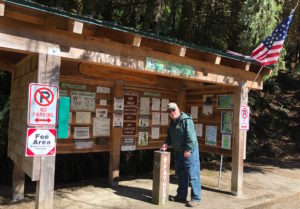
Campgrounds tend to need support from additional revenue. In 1980, for example, Oregon eliminated the gas tax to support state parks. The result was that by 1996, Oregon was in danger of closing 64 state parks due to a lack of funds.
The parks were only saved — and are still supported — by millions of dollars annually from the Oregon Lottery following approval of a 1998 ballot measure.
The Forest Service has also looked for ways to save money, including outsourcing the management of campgrounds to private vendors.
“I think you just have to say that it comes down to money,” said Andy Stahl, executive director of Forest Service Employees for Environmental Ethics. “The Forest Service brings in most of their money fighting fires and through logging. They gave responsibility for campgrounds to private concessionaires long ago. I’m just not sure the Forest Service sees camping as a core part of their mission in the same way they did in the 1950s.”
“NIMBY” campgrounds
While Oregon’s state park system has only opened three campgrounds since the 1970s, it’s not for a lack of trying.
In the past 20 years, Oregon was close to building three large state park campgrounds when local pressure torpedoed the plans.
In 2008, plans for a campground at Cougar Valley State Park, near Manzanita, was scuttled by opposition from local residents.
In 2014, OPRD put $100,000 into plans to purchase and develop land in eastern Oregon that would become Grouse Mountain State Park. The plan was voted down after ranchers, farmers and Grant County officials said it would take too much land out of the property tax base.
In 2019, plans for a 154-site campground at Brian Booth State Park north of Waldport were blocked when Lincoln County commissioners refused to rezone the land so the campground could be built. Neighbors raised concerns about traffic, crowds, flooding and even nutria populations, and said parks officials hadn’t adequately addressed concerns.
“Even if we wanted to, we can’t bulldoze campgrounds into existence,” Havel said. “Creating a new campground is probably the hardest thing we do. You’re essentially creating a brand-new community. You’re inviting lots of people into an area where people might already live nearby. It takes a lot of trust. If people don’t feel ready, we have to stop.”
For now, Oregon’s state park system is focusing on expanding current campgrounds, something they’ve done in the past. A $50 million bond passed by the Legislature should allow the creation of 235 new campsites and 37 new cabins at Champoeg, Silver Falls, Milo McIver, Fort Stevens and Nehalem Bay, while moving another 75 sites to a safer location at Cape Lookout State Park.
“We know that we need more capacity, especially on the Oregon Coast, and we’re committed to that,” Havel said. “For now, expansion is the best path forward, but that doesn’t mean we’ve given up on new campgrounds.”
The Forest Service also said that its focus is maintaining the many campsites it already has. Creating entirely new campgrounds requires a lengthy environmental impact study and “our annual operating budget isn’t set up to make or manage the investment an entirely new campground would require,” Machnik said.
“We do take advantage of opportunities like the Great American Outdoors Act and other sources of infrastructure investment to focus on refurbishing roads, water systems and the campgrounds we already have — many of which are pretty old and need attention first,” she said.
Private campgrounds
Alyssa Ravasio said she originally founded the website Hipcamp with the idea of putting every public campground on a map — a way of giving people a one-stop shop for places to go.
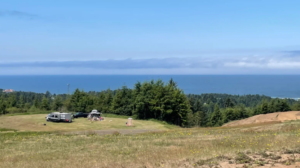
But by 2015 and 2016, she realized there was more demand than supply and the best way to get more people outdoors was to work with private landowners to add more campsites. They started actively recruiting ranchers and farmers, especially in areas near national parks or recreation hotspots, to see if they’d be interested in setting up small campsites to make a little extra money.
She said Oregon has become a big market for private campsites, mainly on the Oregon Coast, near Bend and within a few hours of Portland.
A look at their website shows an eclectic mix of sites, including everything from a “River Oasis Tipi Retreat” ($150 per night) to a “May Contain Duck Farms” ($50 per night), both near Sisters. Many prices range from $45 to $60 per night, though Hipcamp said the average overnight price overall is $35.
Hipcamp wouldn’t share the total number of private campsites it has in Oregon, but said the number of new campsites has increased 119 percent since 2019 and the number of bookings are up 326 percent. It said the number of RV-friendly bookings were way up, accounting for 28 percent of all bookings, especially on the coast where RV sites at state parks have become increasingly difficult to get.
“One big advantage of private campgrounds is privacy, since the majority of our sites are single spots and often surrounded by a lot of land,” Ravasio said. “There’s also a lot of diversity. One site might be on ranch land and another could be an orchard. We also have a lot ‘glamping’ experiences, so one place might offer a bathtub filled with herbs just outside the tent.”
She said it’s simple for landowners to get started, especially if they’re just hosting an RV site. But they can also get fancy.
“It’s a great way to create value on land you already own,” Ravasio said. “And our mindset is that by supporting local landowners, who are taking care of the land, it helps conserve it long-term from development, which is good for biodiversity and good for the environment.”
That more people are getting outdoors is a good thing, said Havel, it just happened so rapidly that it has come as a shock to the camping system. They’re adding new sites. They’re planning future campgrounds. It just takes time.
At federal campgrounds, there are open sites, even on weekends, but you might have to drive a little longer or stay at that campsite without that idyllic swimming spot.
That means Carol Gilbert is likely to keep waking up early, months before the sunny days of summer and playing campground Jeopardy for just one of those perfect Oregon campsites.
- Zach Urness can be reached at zurness@statesmanjournal.comor 503-399-6801. Find him on Twitter at @ZachsORoutdoors.


